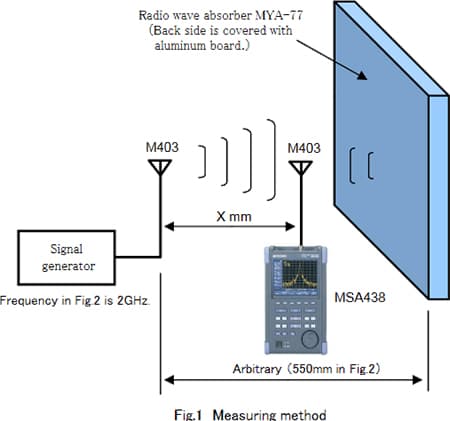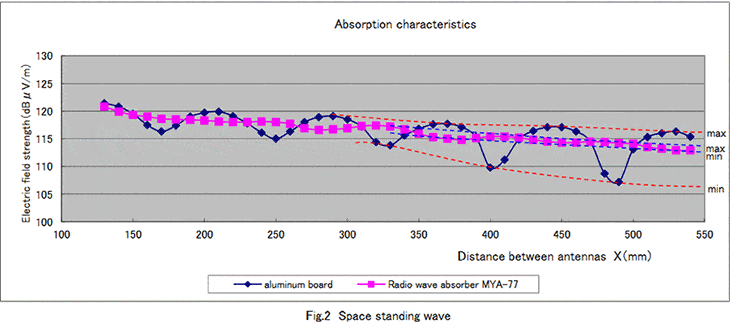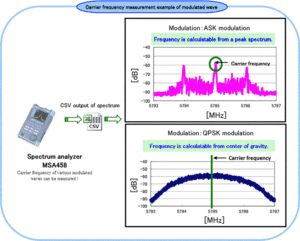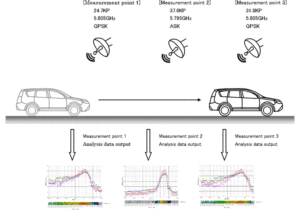Measurement example using MSA438 and dipole antennas
Application
The radio wave absorption characteristics by space standing wave ratio method can be measured using optional dipole antennas and MSA400 series.
Since a radio wave reflects at the boundary surface, a standing wave is generated by incident wave and reflected wave at the front of boundary surface. If the standing wave at this front of boundary surface is measured, a standing wave ratio can be determined and then a reflection coefficient can be calculated.
Solution

In this measuring method (Fig.1), the standing wave ratio (ρ) is measured using antenna M403 which can be moved slightly not to disturb standing wave.
Fig.2 shows the space standing wave measured actually. The standing wave changes depending on the moving distance of antenna. However, the reflection coefficient |Γ| can be determined by extending the envelope (dashed red and blue lines in Fig.2) and then by measuring the minimum value Emin and the maximum value Emax of the electric field strength at the front of wave absorber.
Standing wave ratio ρ= Emax/Emin = (1+|Γ|)/(1-|Γ|) Reflection coefficient |Γ|= (ρ-1)/(ρ+1)
For example, the reflection coefficient of MYA-77 is calculated from Fig.2. From max and min values (blue dashed lines) at boundary surface;
Emax=114dBμV/m=0.5V/m
Emin=112.8dBμV/m=0.43V/m
ρ=0.5/0.43=1.16
|Γ|=0.16/2.16=0.074
Furthermore, the return loss (RL) is determined from reflection coefficient. RL=-20log|Γ|=22.6(dB)
Since the absorption performance of MYA-77 at 2 GHz is about 23 dB, two values match mostly.

System configuration
| Spectrum Analyzer[MSA438] | x 1 |
| Dipole antenna ex.)M403(1.7GHz to 2.2GHz) | x 2 |
Products introduction

Please feel free to contact us.
If you want to verify 5G, customize a radio wave shield box, or need product repair, please do not hesitate to contact us about any small matter.


